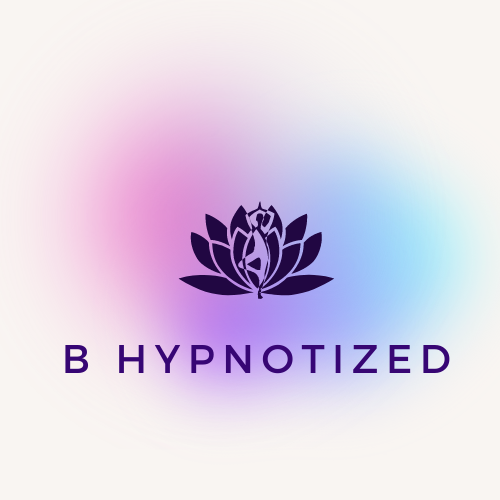Hypnosis for Substance Use
Substance use disorder affects about 20 million Americans aged 12 and over (www.drugabusestatistics.org). The use of different substances varies significantly according to demographics. No matter what the substance is, we know that someone is probably stuck in a habit loop.
Often substance addiction starts with a “trial” which then progresses into “only at certain times” use. Next thing you know, your body actually feels different without these substances. These substances are almost made this way. Some of them create physical dependency but almost all of them come with emotional dependency as well.
When someone wants to break the habit loop, they may try a variety of methods. Cold turkey, therapy, rehab centers, or replacement habits are just a few of them. When it comes to stopping substance use with hypnosis, hypnotherapy offers great support when someone is ready to leave the habit in the past.
What is substance use disorder?
American Psychiatric Association describes substance use disorder as a condition in which there is uncontrolled use of a substance even though the results are harmful to the person. These substances can be things like alcohol, tobacco, opioids, LSD, PCP, pain killers, or even sedatives. The person focuses on the substance so much so that they may lose function in their day-to-day life.
People with substance use disorder may experience distorted thinking. Additionally, in time, these substances may change the way the brain functions. While intoxicated, the person may feel calm, relaxed, euphoria, or intense pleasure. However, as the intoxication wears off, their distorted thinking may lead them to perceive the world negative.
What are the symptoms of substance addiction?
Although it may be easier for outsiders to spot a difference in behavior or actions, it may be difficult for someone who is dealing with substance use disorder to recognize their unhealthy behavior. Oftentimes, it’s actually hard to accept that you may be overusing a substance. These can be some signs of substance use disorder:
- Continuously using the drug even though you know that it’s harmful in your life
- Having intense urges that alters your thinking
- Building tolerance and needing more drugs to get the same effects
- Missing responsibilities
- Having withdrawal symptoms when not using the drug
These are just a few common symptoms one can experience however, everyone will have different symptoms as well.
What are the causes of substance addiction?
There may be many reasons why one may choose drugs to escape reality. According to the American Psychiatric Association, one may begin taking drugs to feel good, to feel better, to do better, and/or curiosity or peer pressure.
As humans, we always seek pleasure and avoid pain. Often drugs give us a chance to escape reality. If you are struggling with your reality, you may seek that pleasure feeling more often.
Interestingly, substance use disorder is more common among mental illness sufferers as well. Sometimes, the “easiest way” to avoid the symptoms of a mental health problem can be drugs.
Additionally, people who deal with substance use disorder may also experience low self-esteem, trauma, and/or lack of support.
How to break the habit loop?
We now know that habit has a very simple structure: Cue, which leads to the action in an attempt to reach to reward.
No matter what the habit is, whether it is substance use, nail-biting, or drinking coffee, this structure usually exists. The goal is to reach the reward.
Breaking the habit can actually be easier than we think. The habit loop usually relies on the cue. If you change the cue, a.k.a., the triggers, you will find that you don’t have a strong tendency to act.
Another way of breaking the habit loop is replacing the action with a healthier one which means the cue and the reward are the same. For example, if you smoke a cigarette when you feel bored, a replacement can be taking a moment for a short walk or listening to your favorite song when you are bored.
However, when there is a substance use disorder, breaking the habit loop may not be as easy. After all, there may be other associated problems such as self-esteem issues, trauma, or physical dependency.
This is why hypnotherapy can be a powerfully helpful method for breaking the habit loop and quitting the behavior.
How can hypnosis help with addictive substances?
Hypnosis is a therapeutic tool that affects specifically limiting subconscious beliefs and perspectives. With the help of hypnotherapy, the person can actually break free from their substance use by increasing motivation, increasing self-esteem, releasing emotional baggage, and letting go of the cravings.
Working on the 4 main areas with hypnosis
Motivation, self-esteem, cravings, and the source of the addiction are four main areas that will help the person change and commit to their decision to change in the long term.
Motivation
Increasing motivation with hypnosis is actually pretty easy. During the calm and relaxed state of hypnosis, the person can get out of their distorted thinking and start recognizing the risks and losses associated with the addiction. Additionally, during hypnosis, we can anchor the positive reasons why the person is making the decision to leave the substance in the first place. The subconscious anchor helps the person to remain motivated no matter what the hardships can be.
Self-esteem
Self-esteem is that feeling that lets us know that no matter what happens, we will be able to handle the situation. If you have low self-esteem, you may doubt your abilities to cope. During hypnotherapy, we work on strengthening self-esteem subconsciously. We all have the potential to believe in ourselves. When we reach this power, we can commit to the decision to leave the substance easier.
Cravings
Anytime when we decide to change a habit, we will encounter urges or cravings. When it comes to substance addiction, cravings may be more intense due to the effects of chemical intoxication.
With the help of hypnosis not only you can release the attachment to the substance subconsciously, but also, you can learn how to cope with the cravings effectively. Usually, hypnotherapists use the anchor technique to anchor a positive state of being subconsciously, to be used during times of craving. This may be a word or a small act such as rubbing two fingers. Either way, it will help with resisting the craving while reinforcing the commitment.
Reasons for the addiction
There can be many reasons why one chooses drugs to escape reality on a regular basis. It’s important to uncover the reasons to prevent lapses later on. Hypnosis is a great method to surface hidden reasons, meanings, or memories that may have led to substance use.
Can self-hypnosis be helpful with addictive substances?
Self-hypnosis is another subconscious tool that is usually helpful with habit change. However, when it comes to uncontrolled substance use, self-hypnosis may not be enough by itself. After all, working with self-hypnosis, you would still be operating within your toxic perfective.
Self-hypnosis can help you manage the cravings and increase motivation to commit new behaviors. These are positive reinforcements that can help with relieving stress, alleviating additional pressure, and help you be calm and relaxed.
In addition to self-hypnosis, attending a support program such as AA (Alcoholics Anonymous) can be really helpful to get support throughout your journey.
Final words
Breaking free from substance use can be a complex journey. Oftentimes, different professionals will be involved to accompany you to help you have an easy and comfortable time reaching the other end. Hypnotherapy may not be the only therapeutic tool that you need but it will definitely be one of the most powerful tools that you can use. In the end, all your efforts and hard work will be worth it!


